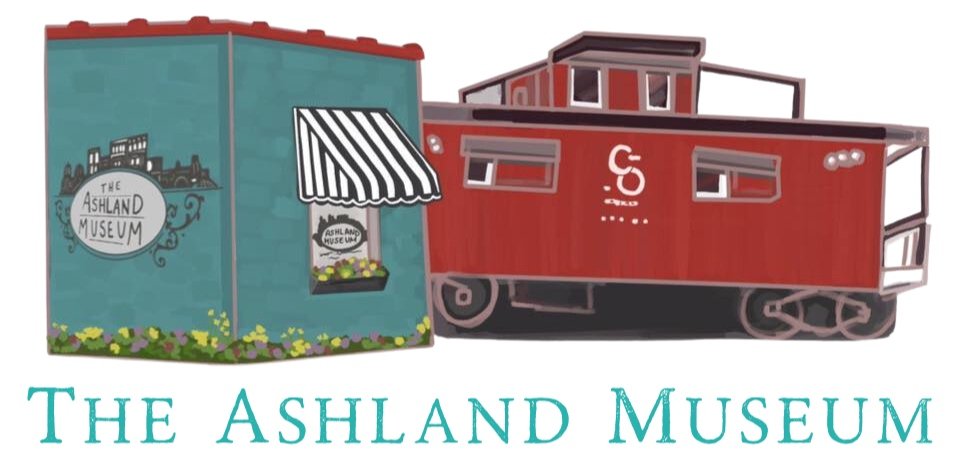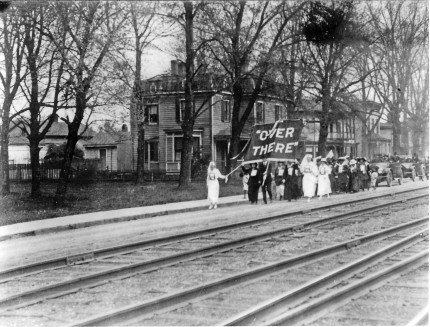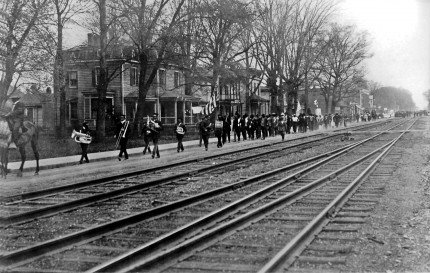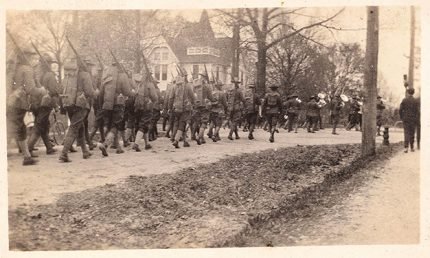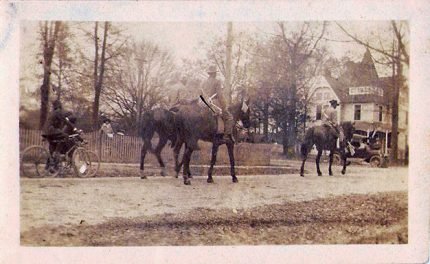World War 1 - Ashland Responds
Photo 1: The “Over There” banner evoked a popular patriotic song written in 1917 by George M. Cohan that enthusiastically supports America’s entry into the war and the soldier’s departure for the front lines.
Photo 2: The “Colored Societies” led by a black band.
Photo 3/4: Pictured marching along Howard Street toward James Street –on the back of the photograph: “Hanover Drafted Boys from Camp Lee in Some Parade”
On April 6, 1917, the United States entered World War I, and Ashland wanted to do its part. The Liberty Day Parade in April of 1918, raised funds for War Bonds. The parade culminated in a ceremony at the town lot where speeches, dinner and vaudeville entertained the crowd. Organizers held Liberty Day celebrations to encourage people to buy Liberty Bonds and War Saving Stamps so the government could pay for the war.
Once again, Ashland watched as trains full of men on their way to the front lines rumbled through the heart of town. The Hanover Progress reported that the old Hanover Grays unit was activated “for the purpose of training and for inspiring men to be ready to do their duty when their services are needed…Mr. Floyd W. Tucker, the local Scoutmaster, who has also had military experience, will be in charge of the drills until the regular election of officers for the company.” The ranks of the Grays swelled to 45. Two Ashland boys had already joined the country’s armed services, according to the paper, “Joseph Dugdale for the navy and Richard Cardwell for the army. Hats off to these boys.” The paper described the army uniform as “that snappy-looking khaki suit, leggins and campaign hat.”
Unable to fight alongside their men, patriotic women found other ways to assist in the war effort. At the Methodist Church, “the Women’s Missionary Society made quilts for the Belgians and donated kid gloves for the linings of soldiers’ coats.” A few adventurous women decided they could not stay at home. “Mrs. W. L. Foy is entertaining on Saturday afternoon.” reported the newspaper, “in honor of Misses Stuart Blanton, Mary Goodwin, Margaret Riker, Alice Howison and Mrs. Shirley Carter, who will leave for New York for ten days’ training before going ‘overseas’ for Red Cross work.”
All the students at Randolph-Macon were in the Student Army Training Corps. They drilled four days a week but were issued no weapons, were given no instruction in military science nor were they issued uniforms at first. Many of the students also helped out on nearby farms and in gardens where the men who tended them had gone off to war. By the 1918-19 academic year, the student soldiers had uniforms, and two full companies were proudly pictured in the Yellow Jacket yearbook.
Dorothy Jones remembered Armistice Day, November 11, 1918, vividly. She was attending the Misses Herndon School that day when her grandfather Miles Hunter Gardner burst into the classroom shouting, “Close School! Close School! The war is over! The war is over!” He lifted little Dorothy “onto his shoulders and strode from the classroom and down James Street to the public school where he issued the same directive.” Dr. Jones recalled that, “Along the way he was beating a large dishpan and shouting ‘The war is over!’ People were pouring from their houses shouting and cheering and beating on pans, bells were ringing, whistles were blowing, the rejoicing was unforgettable.”
